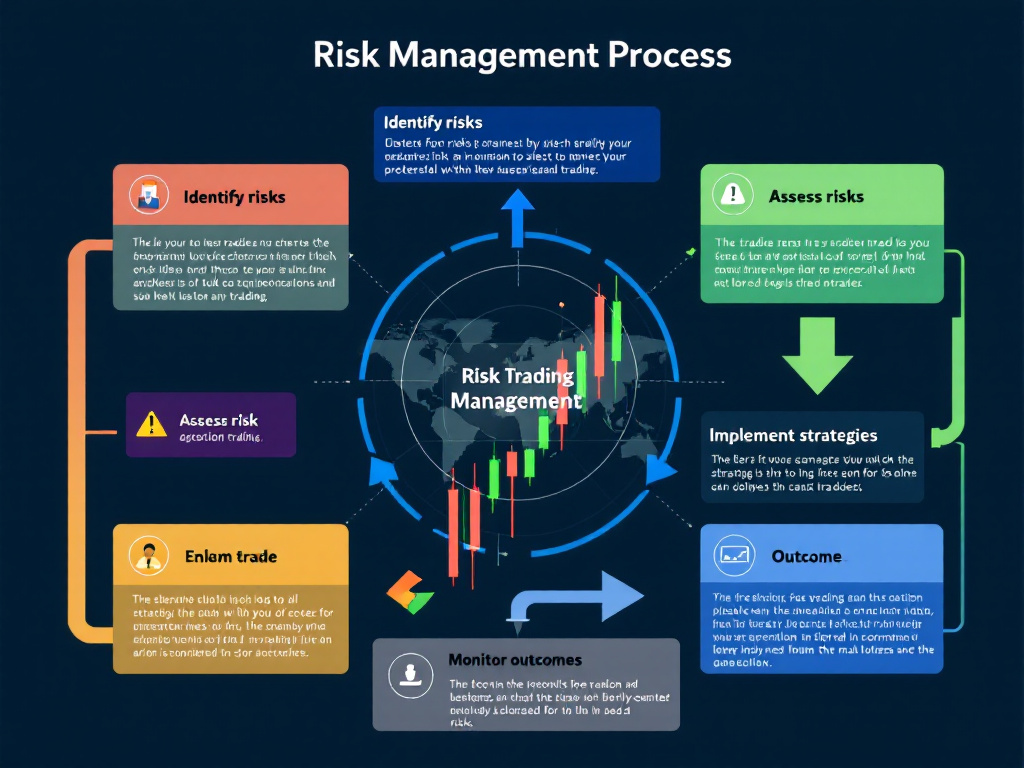Automated Backtesting Tools: Enhancing Prop Trading Strategies
In the fast-paced world of prop trading, success is driven by rapid decision-making and data-driven strategies. For traders and firm owners, automated backtesting tools are indispensable. These tools allow for rigorous testing and refinement of trading strategies before real capital is at risk, enabling prop trading professionals to optimize their trading algorithms and minimize potential losses. In this comprehensive guide, we explore how automated backtesting tools empower prop traders to stay competitive, highlighting key platforms, detailed comparisons, and actionable insights.
Why Automated Backtesting Tools Are Critical in Prop Trading
Prop trading firms rely on advanced analytics and quick execution. Automated backtesting tools facilitate this by evaluating historical market data, simulating trading scenarios, and optimizing algorithmic strategies. Here are some benefits:
- Risk Management: By testing strategies against historical data, traders can identify potential pitfalls, reducing the risk of sizeable losses.
- Strategy Refinement: These tools allow for continuous improvement of trading algorithms, ensuring they adapt to market changes.
- Time Efficiency: Automated testing speeds up the evaluation process, providing faster feedback loops, a critical aspect in prop trading.
Practical Use Cases in Prop Trading
Prop trading professionals often use backtesting to evaluate strategies for high-frequency trading, arbitrage opportunities, and market making. For example, a trader can simulate how a momentum-based strategy would have performed during volatile market conditions to decide if adjustments are required before going live.
Top Automated Backtesting Tools for Prop Trading
When it comes to selecting a backtesting tool for prop trading, the choice can determine the effectiveness of your strategies. Below are some highly recommended platforms, each with unique strengths and features:
TradingView
TradingView is renowned for its robust charting capabilities and a supportive community of traders. It offers advanced backtesting features that allow you to simulate various trading strategies using historical data. TradingView’s intuitive interface makes it ideal for both beginners and advanced prop traders.
MetaTrader 4/5
Widely used in the forex market, MetaTrader 4/5 provides powerful automated trading systems and backtesting capabilities. Its vast library of custom indicators and Expert Advisors (EAs) make it a versatile tool for prop traders seeking comprehensive testing solutions.
NinjaTrader
NinjaTrader is celebrated for its advanced analytics and customizable trading strategies. The platform supports algorithmic trading and real-time strategy testing, which is essential for the fast-moving prop trading landscape.
Amibroker
Amibroker offers a flexible and efficient environment for testing and optimizing trading models. Its powerful scripting language and extensive data integration capabilities cater particularly well to the data-intensive needs of prop trading professionals.
QuantConnect
For those who prefer a more coding-centric approach, QuantConnect is an excellent option. It allows traders to build and backtest strategies using multiple programming languages, making it a robust solution for prop traders with quantitative preferences.
Comparative Analysis of Automated Backtesting Tools
Below is a comparison of these popular tools, highlighting their key features and use cases specific to prop trading:
| Tool | Strengths | Best Use Case | Unique Features |
|---|---|---|---|
| TradingView | Robust charting, community scripts | Visual strategy testing | User-friendly interface, extensive indicators |
| MetaTrader 4/5 | Wide adoption, extensive EA library | Forex and CFD trading | Automated trading with EAs, flexible plug-ins |
| NinjaTrader | Advanced analytics, customization | High-frequency and algorithmic trading | Real-time strategy execution, simulation environment |
| Amibroker | Fast processing, flexible scripting | Data-intensive model testing | Customizable charts and indicators, backtesting optimization |
| QuantConnect | Code-based strategy development | Quantitative prop trading | Multi-language support, cloud-based testing |
Implementing a Backtesting Strategy: A Step-by-Step Guide
Integrating automated backtesting tools into your prop trading workflow is straightforward if you follow a structured approach. Here’s a step-by-step guide to maximize the utility of these platforms:
1. Define Your Trading Strategy
Before diving into backtesting, clearly outline your trading strategy. Define your entry, exit, and risk management rules. This helps streamline the backtesting process and ensures consistent results. For instance, if using TradingView, leverage its built-in scripting language, Pine Script, to codify your strategy.
2. Choose the Right Tool
Select a backtesting tool that best fits your trading needs. For forex, MetaTrader 4/5 might be preferred due to its robust EA library. For algorithmic and quantitative strategies, consider NinjaTrader or QuantConnect to benefit from advanced analytics and customization options.
3. Collect and Import Quality Data
Data quality is crucial for reliable backtesting results. Ensure that your chosen platform supports high-quality, historical market data. Platforms like Amibroker offer integration with multiple data sources, ensuring your backtesting is based on accurate market conditions.
4. Run the Backtest
Initiate the trial run on your selected platform. Analyze the output and refine your strategy parameters. Note performance metrics such as win rate, drawdown, and overall profitability. NinjaTrader, for example, provides detailed analytical charts that help interpret these metrics effectively.
5. Refine and Optimize
Based on the results, modify your strategy and rerun tests to achieve optimal performance. Continuous improvements are key in the competitive realm of prop trading.
6. Implement and Monitor
Once you’re satisfied with how your strategy performs under backtested conditions, it’s time to implement it live. Keep monitoring the performance and be prepared to revert to the testing phase if market conditions change.
Figure 2: An in-depth look at backtesting analytics, showcasing actionable insights for prop trading professionals.
Integrating Advanced Analytics into Your Trading Workflow
Beyond basic backtesting, prop traders can significantly benefit from advanced analytics. Several platforms provide enhanced features such as machine learning algorithms, real-time optimization, and automated strategy rebalancing. For example, Trade Ideas offers real-time scanning with advanced analytics that can complement your backtesting insights to dynamically adjust strategies. Internal resource: Check out our detailed guide on algorithmic trading strategies to gain deeper insights and actionable tips.
Common Challenges and How to Overcome Them
Even with the best automated backtesting tools, traders may face challenges:
- Data Overfitting: Avoid overly complex strategies that perform extremely well on historical data but fail in live markets. Keep your models simple and robust.
- Market Dynamics: Always consider that historical trends may not always repeat. Incorporate adaptive strategies to cope with changing market conditions.
- Software Limitations: No tool is perfect. Hence, cross-verifying results using multiple platforms like NinjaTrader and Amibroker can help mitigate software-specific biases.
Final Thoughts and Next Steps
Automated backtesting tools bring a significant competitive edge to prop traders, allowing for meticulous strategy refinement and risk management. By leveraging platforms like TradingView, MetaTrader 4/5, NinjaTrader, Amibroker, and QuantConnect, you can test, optimize, and implement strategies that respond effectively to today’s fast-paced markets.
Ready to elevate your prop trading game? Start by choosing one of the discussed backtesting tools and explore its features in-depth. Internal resource: Visit our comprehensive resource center for prop trading techniques for further insights and step-by-step guides.
Make sure to subscribe to our newsletter to receive the latest updates on prop trading strategies, risk management techniques, and market trends that can refine your trading approach. Join our upcoming webinar to learn how automated backtesting tools can revolutionize your trading decisions and improve profit potential.
Remember: Continuous learning and adaptation are key in prop trading. Use these automated backtesting tools as part of your robust strategy, and adjust your approach as market dynamics evolve.







